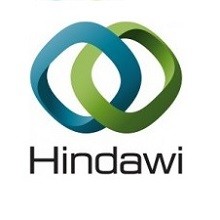
ارزیابی اثر ضد توموری در شرایط آزمایشگاهی و فارماکوکینتیک در داخل بدن
1- Introduction
2- Materials and Methods
3- Results and Discussion
4- Conclusions
References
Introduction
Galangin (Gal) is an active flavonoid extracted and isolated from the roots of Alpinia officinarum Hance, an annual plant, and has a long history of use as a medicine and edible herb in China to warm the stomach, prevent vomiting, and remove cold and pain. It is also listed in the Chinese Pharmacopoeia [1]. Many studies have reported that galangin possesses a broad range of pharmacological activity such as being anti-inflammatory, antibacterial, and antifungal and suppressing vitiligo, Alzheimer’s disease, and cancer [2]. Recent studies have found that galangin can induce apoptosis and promote autophagy [3]. However, it does not easily dissolve in aqueous solution which could limit its potential for clinical use. In the past decades, researchers have developed many nanotechnological solutions to solubilize poorly soluble drugs. Compared with other nanoformulations, liposomes have many advantages, such as excellent biocompatibility, the capability to enhance absorption of drugs, and the capability to reduce their toxicity; thus, liposomes are a good potential drug delivery system which can improve the solubility of liposoluble drugs [4]. However, a major problem exists with intravenously administered liposomes as they suffer rapid clearance from the blood, possibly due to the adsorption of plasma proteins on their phospholipid membranes allowing more rapid recognition by mononuclear macrophages which phagocytose and clear them from plasma [5]. Therefore, in this study, measures that improve the stability of common liposomes for intravenous delivery were proposed, including the modification of the liposomal surface with polyethylene glycol to avoid macrophage phagocytosis [6]. Research on galangin has, until now, largely focused on pharmacological activity, with no studies on pharmacokinetics having been reported. We hypothesize that polyethylene glycol (PEG) modification of liposomes could prolong the half-life of circulating liposomes and improve the aqueous solubility and pharmacokinetic properties of galangin loaded within. In this study, we prepared galangin-loaded PEG-modified liposomes and evaluated their targeting to liver cancer cells in vitro and the pharmacokinetic parameters in vivo in rats.
